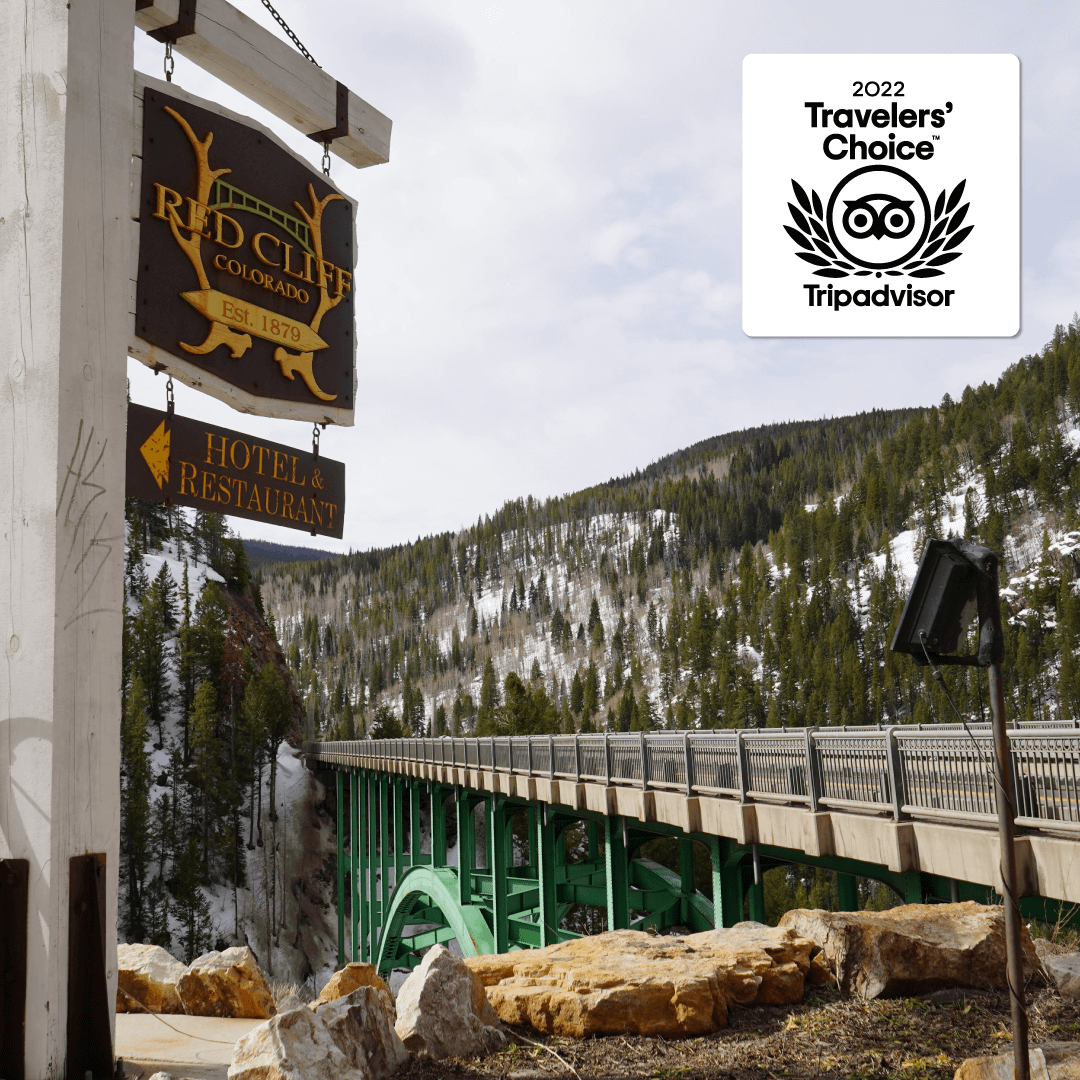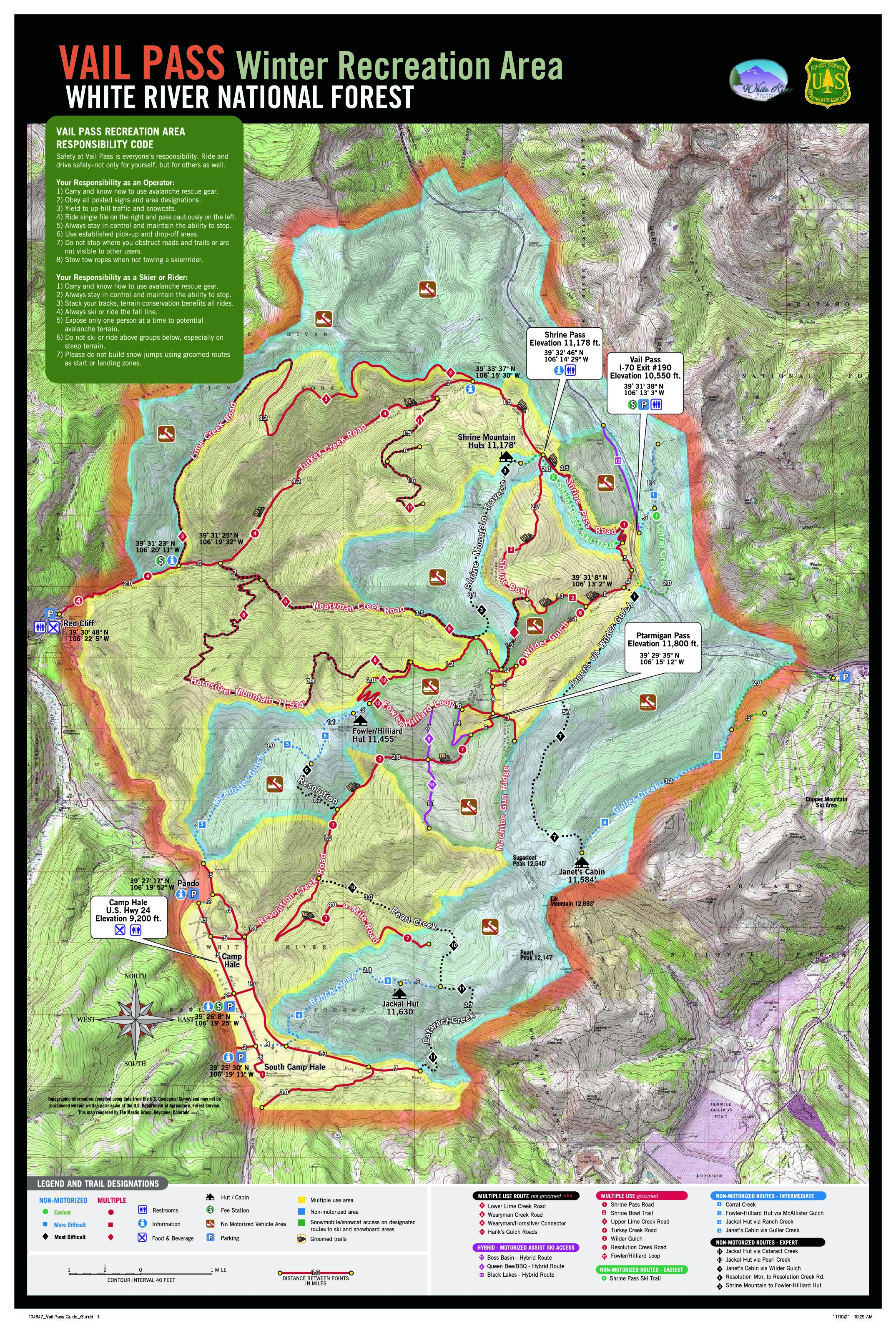Vail Pass Recreation Area
55,000 Acres on the Backside of Vail Mountain
Location: Vail Colorado

About Vail Pass Recreation Area
What is Vail Pass?
Managed by the US Forest Service, Vail Pass Recreation Area is a 65,000 acre backcountry paradise. Located on the backside of Vail Ski Resort, there are over 65 miles of motorized trails, over 45 miles of groomed trails and just over 3,000 acres of motorized-assisted (tow-in) ski terrain. Elk Mountain at 12,693 feet is the tallest mountain in the recreation area while the historic Camp Hale is the lowest elevation at 9,100 feet. If you’re wondering where to go on Vail Pass, you can check out the trails down by Camp Hale and even stop in the town of Red Cliff for lunch at Mangos Mountain Grill. If you’re looking for open powder fields, the Shrine Bowl region offers a popular open field to explore and is easily accessed from the parking spaces at the top of Vail Pass.
Rules of Vail Pass
Always carry avalanche rescue gear
Uphill traffic and snowcats have right of way
Ride single file, pass on the left
Use designated pick up/drop off locations
Stay in control
Always ride the fall line
Never traverse above groups
Adventure Rentals on Vail Pass

Where can you rent Snowmobiles and Side-by-Sides on Vail Pass?
The Rocky Mountain Adventure Rentals location in Red Cliff is the only rental outfitter with legal, direct access to Vail Pass. We offer UnGuided Snowmobile, Timbersled, Backcountry Skiing, and Side-by-Side rentals from our Red Cliff location. All guests of RMAR also receive 10% off their food bill from Mangos Mountain Grill in Red Cliff. To learn more, visit our Red Cliff location.
Where is Vail Pass?
Vail Pass is located on I-70 between Summit County and Eagle County Colorado. The pass can be accessed by three public locations: I-70 rest area at the summit of Vail Pass (Mile Marker 190), Red Cliff, and the Camp Hale – Continental Divide National Monument pull-off along highway 24.
When Does Vail Pass Open and Close?
Vail Pass Recreational Area experiences seasonal closures from late April – early June. During this time, the pass is closed for animal migration patterns. While closed, no motorized vehicles are allowed to access the trails. Along with animal migrations, the pass will also open/close based on how much snow there is or how little there is. To avoid trail damage, the access gates will remain closed until the majority of the snow has melted off. This helps protect the trails and the local water supply to Red Cliff, Minturn, and Eagle County. The pass will also close when too many users disrespect the land causing the forest service to close the gates. To help avoid these closures, always follow the rules of Leave No Trace and Colorado Trail Etiquette.
When is the best time to visit Vail Pass?
Weekends on Vail Pass are always the busiest due to heavy “weekend warrior” traffic from Denver, Colorado. With the traffic comes a rush for parking as parking on the pass is limited. We recommend that you arrive early. There is limited parking available at the I-70 Vail Pass Exit and there is a $10 per person fee to park your vehicle so be sure to have some extra cash on hand.
Where can you Snowmobile on Vail Pass?
The Vail Pass Snowmobile Map below outlines all of the available areas for Snowmobile Renters and Timbersled Renters to explore as set by the US Forest Service. You are in the Colorado Backcountry as soon as you leave the parking locations so you must be prepared for the unexpected. Avalanche shovels, probes, and beacons should always be in your pack and keep in mind that you will not have cell phone service. You should also carry a GPS device and a topographic map of the area. Vail Pass Colorado offers motorized, non motorized, and backcountry skiing locations, and it is your responsibility to know where you are at all times.
Vail Pass Recreation Area Map
YOU ARE RESPONSIBLE
These maps are for reference only. Always carry certified U.S. Forest Maps and GPS devices while in the back country. It is your responsibility to know the hazards involved in back country travel and to use proper safety gear and procedures to minimize risks and hazards.



